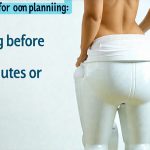Daily driving is an integral part of modern life for many, enabling commutes to work, family visits, and countless other activities. However, this routine activity can inadvertently put stress on the bladder, particularly for those who drive long distances regularly. The prolonged sitting position, combined with limited opportunities for timely bathroom breaks, can contribute to discomfort, urgency, or even more significant issues over time. Understanding how driving impacts bladder health and implementing proactive strategies is crucial for maintaining comfort and well-being while behind the wheel. This isn’t about eliminating driving; it’s about making informed choices to protect a vital part of your body during this common daily practice.
The bladder, designed for intermittent filling and emptying, thrives on regular intervals and avoids prolonged pressure. Long drives often disrupt these natural rhythms. Dehydration exacerbates the problem as concentrated urine irritates the bladder lining, increasing urgency. Furthermore, ignoring the urge to urinate repeatedly can weaken bladder muscles over time, potentially leading to incontinence or other functional issues. Therefore, a mindful approach incorporating hydration, planned breaks, and postural awareness is essential for anyone who spends significant time driving each day. This article explores practical ways to protect your bladder health while maintaining the freedom and convenience of daily driving.
Understanding the Impact of Driving on Bladder Health
Driving inherently presents several challenges to optimal bladder function. The seated position compresses the pelvic floor muscles, which play a vital role in supporting the bladder and urethra. Prolonged compression can weaken these muscles, decreasing their ability to effectively control urine flow. This is especially true if drivers maintain poor posture – slouching or leaning forward puts even more pressure on the bladder area. Beyond physical compression, the act of driving itself often encourages delayed urination. Drivers may prioritize reaching their destination over responding to natural bodily signals, leading to a chronically overfull bladder and potential strain. If you’re struggling with urgency, consider how to rest the bladder without suppressing signals.
The issue isn’t limited to long road trips either. Even daily commutes, if consistent and lengthy, can contribute to bladder stress. The habit of “holding it” becomes ingrained, and the bladder gradually adapts to functioning under duress. This adaptation isn’t positive; it’s a sign that the natural mechanisms are being compromised. Moreover, many drivers consume caffeinated beverages or sugary drinks during their drive – further irritating the bladder and increasing urinary frequency. Recognizing these factors is the first step toward proactive protection.
It’s important to note that pre-existing conditions can also be aggravated by driving. Individuals with overactive bladder (OAB), interstitial cystitis, or prostate issues may find their symptoms exacerbated by prolonged sitting and delayed urination. Regular monitoring of your body and consulting a healthcare professional are vital if you experience concerning changes in urinary habits.
Strategies for Staying Hydrated While Driving
Proper hydration is paramount to bladder health, but it’s often overlooked during long drives. The misconception that reducing fluid intake will reduce the need to urinate is counterproductive. Dehydration actually concentrates urine, making it more irritating to the bladder and potentially worsening symptoms. Instead of restricting fluids, focus on consistent, mindful hydration throughout your journey. To learn more about staying hydrated without discomfort, explore ways to rehydrate without flooding the bladder.
- Sip water regularly: Avoid gulping large amounts at once, which can overwhelm the bladder quickly. Small, frequent sips are ideal.
- Choose hydrating beverages: Water is best, but herbal teas or diluted fruit juices can also contribute to fluid intake. Limit caffeinated and sugary drinks, as they irritate the bladder.
- Plan for hydration stops: Incorporate regular stops into your driving plan specifically for rehydration and bathroom breaks. This ensures you’re not sacrificing comfort for speed.
Consider carrying a reusable water bottle in your car as a visual reminder to stay hydrated. A general guideline is to drink approximately 8 ounces of water every hour, but adjust based on individual needs and climate conditions. Remember that the goal isn’t simply to avoid urination; it’s to maintain healthy bladder function through consistent hydration.
Planning Regular Bathroom Breaks
Proactive planning for bathroom breaks is arguably the most effective way to protect your bladder while driving. Don’t wait until you feel an overwhelming urge—that’s a sign that your bladder is already significantly full and stressed. Instead, schedule regular stops every two hours as a baseline. This allows you to empty your bladder comfortably without rushing or feeling anxious. Understanding how to manage urges can also be helpful; learn how to control the impulse to withhold urination.
- Use navigation apps: Many GPS apps allow you to search for rest areas or gas stations along your route, making break planning easier.
- Listen to your body: Even if you’ve scheduled a stop, don’t hesitate to pull over if you feel the urge to urinate before then. Ignoring these signals can lead to discomfort and potentially weaken bladder control.
- Adjust based on individual needs: Individuals with pre-existing bladder conditions may need to take more frequent breaks than others.
It might seem counterintuitive to add extra time to your journey, but prioritizing bathroom breaks is an investment in your comfort and long-term bladder health. These regular intervals prevent excessive bladder distension and allow the pelvic floor muscles to recover from compression.
Optimizing Your Driving Posture
Maintaining good posture while driving significantly reduces pressure on the bladder and pelvic floor. Slouching or leaning forward compresses these areas, exacerbating urinary issues. Here’s how to optimize your seating position:
- Adjust your seat: Ensure proper lumbar support by adjusting the seat back angle. Your lower back should be firmly supported without being overly arched.
- Maintain a comfortable distance from the steering wheel: This prevents leaning forward and compressing the bladder area.
-
Use supportive cushions if needed: Lumbar support pillows or coccyx cushions can provide additional comfort and support, especially during long drives.
-
Be mindful of your movements: Avoid crossing your legs for extended periods, as this can restrict blood flow and put pressure on the pelvic floor.
- Take microbreaks within the drive: Even small adjustments to your posture – sitting upright, stretching your back – can help relieve pressure. These moments can be incorporated during scheduled stops or even short breaks in traffic. To further alleviate pressure, consider how to prevent pressure on the groin when sitting.
Remember: a comfortable and supportive driving position is not just about physical comfort; it’s about safeguarding your bladder health by minimizing unnecessary pressure and strain.
Ultimately, protecting your bladder while driving daily isn’t about drastic changes to your lifestyle—it’s about incorporating mindful habits that prioritize your well-being. By staying hydrated, planning regular breaks, and optimizing your posture, you can continue enjoying the freedom of driving without compromising your bladder health. These small adjustments can make a significant difference in maintaining comfort and preventing potential issues down the road. If you’re experiencing ongoing issues, it may be time to determine if you have a UTI or just bladder irritation.





















